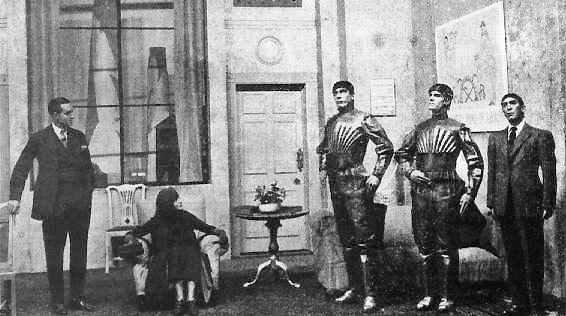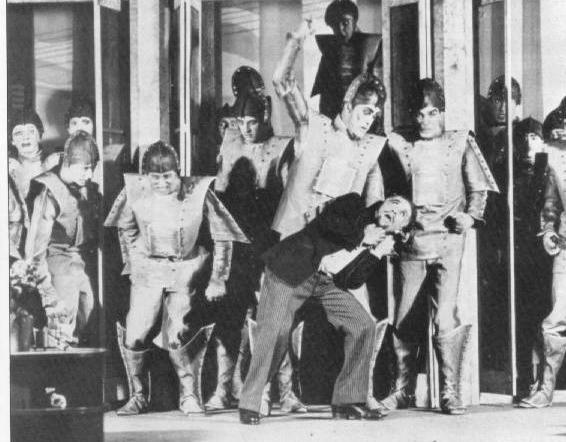 Science Diction is a bite-sized podcast about words—and the science stories behind them. Subscribe wherever you get your podcasts, and sign up for our newsletter.
Science Diction is a bite-sized podcast about words—and the science stories behind them. Subscribe wherever you get your podcasts, and sign up for our newsletter.

For many, the word robot conjures an image of a mechanical being clad in metal, adorned with all sorts of blinking lights and buttons, and even a funny-sounding voice. Indeed, such robots have become stock characters in science fictions stories, novels, films and television shows.
More recently, robots and the derived term robotics have come to represent the most modern engineering technologies for a myriad of functions ranging from artificial intelligence experiments and building automobiles to performing delicate surgical procedures.
As a word, robot is a relative newcomer to the English language. It was the brainchild of a brilliant Czech playwright, novelist and journalist named Karel Čapek (1880-1938) who introduced it in his 1920 hit play, R.U.R., or Rossum’s Universal Robots.
[The origin of the word ‘quark’ is a tale of particle physics, Aristotle, and James Joyce.]
Robot is drawn from an old Church Slavonic word, robota, for “servitude,” “forced labor” or “drudgery.” The word, which also has cognates in German, Russian, Polish and Czech, was a product of the central European system of serfdom by which a tenant’s rent was paid for in forced labor or service.
Taking its cues from other literary accounts of scientifically created life forms such as Mary Shelley’s classic Frankenstein and the Yiddish-Czech legend The Golem, R.U.R. tells the story of a company using the latest biology, chemistry and physiology to mass produce workers who “lack nothing but a soul.” The robots perform all the work that humans preferred not to do and, soon, the company is inundated with orders. In early drafts of his play, Čapek named these creatures labori, after the Latinat root for labor, but worried that the term sounded too “bookish.” At the suggestion of his brother, Josef, Čapek ultimately opted for roboti, or in English, robots.

In the play’s final act, the robots revolt against their human creators. After killing most of the people living on the planet, the robots realize they need humans because none of them can figure out the means to manufacture more robots a secret that dies out with the last human being. In the end, there is a deus ex machina moment, when two robots somehow acquire the human traits of love and compassion and go off into the sunset to make the world anew.
Audiences loved the play across Europe and the United States. Soon after, robots became the darling of science fiction writers, most famously Isaac Asimov, who composed the 3 Laws of Robotics and, eventually, Hollywood’s dream merchants. With each iteration, robots became more fleshly and life-like, or should I say humanoid?
Ironically, R.U.R. was Čapek’s least favorite work even as the play and his coining of robot ensured his literary immortality. He died of influenza in 1938 at the age of 48. Because of his so-called subversive writings against the rising Nazi party, his fatal bout of flu frustrated and outwitted Hitler and the Gestapo, who had put a death warrant on Čapek.
Segment Guests
Howard Markel, M.D., Ph.D. is a professor of the History of Medicine at the University of Michigan. An elected member of the National Academy of Medicine, he is editor-in-chief of the Milbank Quarterly and a Guggenheim fellow.
Meet the Producer
About Christopher Intagliata
@cintagliataChristopher Intagliata was Science Friday’s senior producer. He once served as a prop in an optical illusion and speaks passable Ira Flatowese.